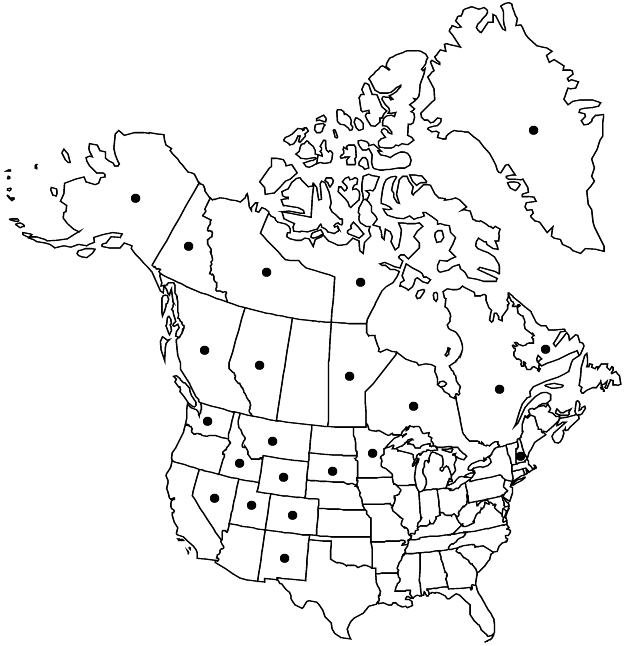Saxifraga cernua
Sp. Pl. 1: 403. 1753 ,.
Plants solitary or in tufts, not stoloniferous, weakly rhizomatous, with small caudex. Leaves basal and cauline, (basal usually ephemeral, gradually dying through growing season, cauline conspicuous, reduced distally); petiole flattened, (5–)10–60(–90) mm; blade round to reniform, 3–7(–9)-lobed usually less than halfway to midvein (distal unlobed), (3–)5–18(–20) mm, slightly fleshy, margins entire, eciliate or sometimes sparsely glandular-ciliate, apex rounded, sometimes acute, surfaces glabrous or sparsely stipitate-glandular. Inflorescences 2(–5)-flowered paniculate or racemelike thyrses, sometimes solitary flowers, (flowers nodding in bud), some or all flowers but terminal one on each branch often replaced by bulbils, 3–30 cm, stipitate-glandular; bracts (proximal ephemeral), petiolate or sessile. Flowers: sepals erect, (sometimes reddish), oblong, margins glandular-ciliate, surfaces short-stipitate-glandular; petals white, not spotted, obovate to spatulate, 5–12 mm, longer than sepals; ovary superior. 2n = 24, 36, 48, 52, 56, 60, 70, 72.
Phenology: Flowering summer.
Habitat: Cool, wet areas, mossy banks, tundra, shady rock faces, late snowbeds
Elevation: 0-4300 m
Distribution

Greenland, Alta., B.C., Man., Nfld. and Labr. (Labr.), N.W.T., Nunavut, Ont., Que., Yukon, Alaska, Colo., Idaho, Minn., Mont., Nev., N.H., N.Mex., S.Dak., Utah, Wash., Wyo., Eurasia.
Discussion
Saxifraga cernua plants rarely set seed; they bear bulbils among the basal leaves. Some reports of S. sibirica Linnaeus from Canada are misidentifications of this species.
Selected References
None.
